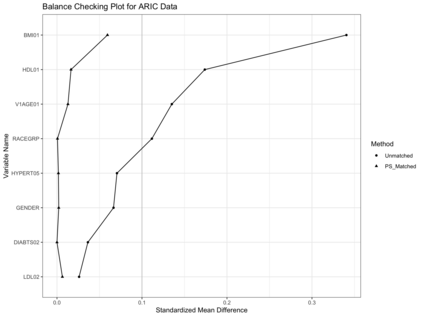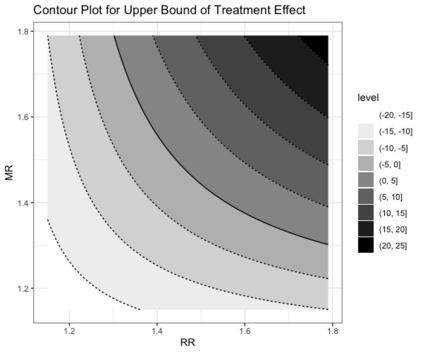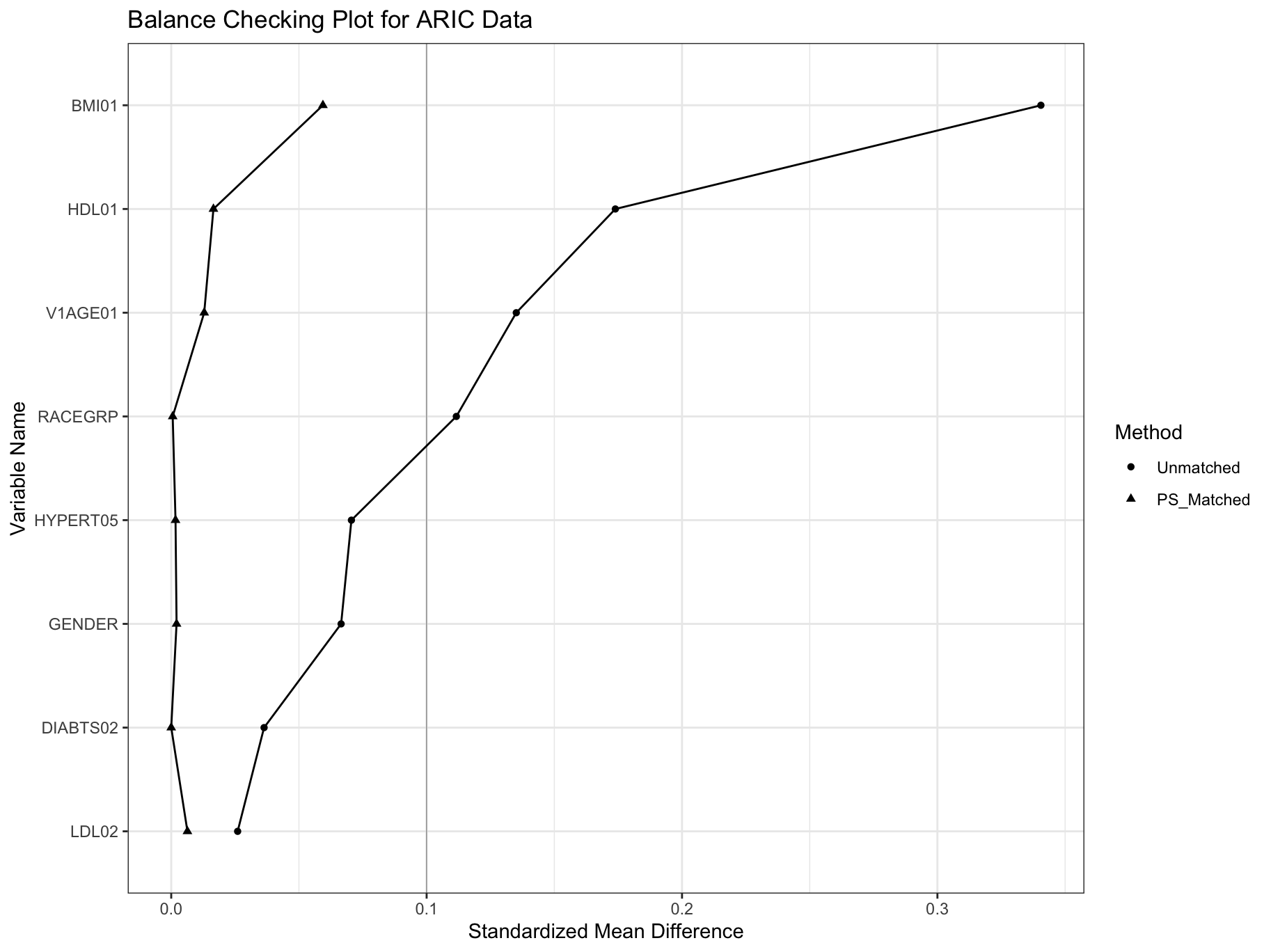Investigating the causal relationship between exposure and the time-to-event outcome is an important topic in biomedical research. Previous literature has discussed the potential issues of using the hazard ratio as a marginal causal effect measure due to its noncollapsibility property. In this paper, we advocate using the restricted mean survival time (RMST) difference as the marginal causal effect measure, which is collapsible and has a simple interpretation as the difference of area under survival curves over a certain time horizon. To address both measured and unmeasured confounding, a matched design with sensitivity analysis is proposed. Matching is used to pair similar treated and untreated subjects together, which is more robust to outcome model misspecification. Our propensity score matched RMST difference estimator is shown to be asymptotically unbiased and the corresponding variance estimator is calculated by accounting for the correlation due to matching. The simulation study also demonstrates that our method has adequate empirical performance and outperforms many competing methods used in practice. To assess the impact of unmeasured confounding, we develop a sensitivity analysis strategy by adapting the E-value approach to matched data. We apply the proposed method to the Atherosclerosis Risk in Communities Study (ARIC) to examine the causal effect of smoking on stroke-free survival.
翻译:调查接触和时间到活动结果之间的因果关系是生物医学研究的一个重要议题。以前的文献讨论了将危险比率作为因非重叠性属性而造成的边际因果效果衡量标准的潜在问题。在本文中,我们主张使用有限的平均生存时间差异作为边际因果效果衡量标准,这一衡量标准可以折叠,并有简单的解释作为某一时间范围内生存曲线下地区的差异。为了解决计量和不计量的混杂问题,提出了与敏感度分析相匹配的设计。匹配的目的是将经过处理和未经处理的科目组合在一起,这与结果模型的错误性能更相适应。我们的性能得分与RMST差异估计值的得分一致,显示这种得分与RMST差异估计值的得分的得分是无差别的,而相应的差异估计标准则通过计算对应的对应关系来计算。模拟研究还表明,我们的方法具有适当的实证性表现,并超越了实践中使用的许多相互竞争的方法。为了评估非计量性融合的影响,我们制定了一种敏感度分析战略,将E值分析方法调整了E-价值方法与社区对结果的研究结果进行对比。我们运用了A-rodal-rodal-restalismismismismismismismismismismismismismismismismismismismismismismismismismisl)。





